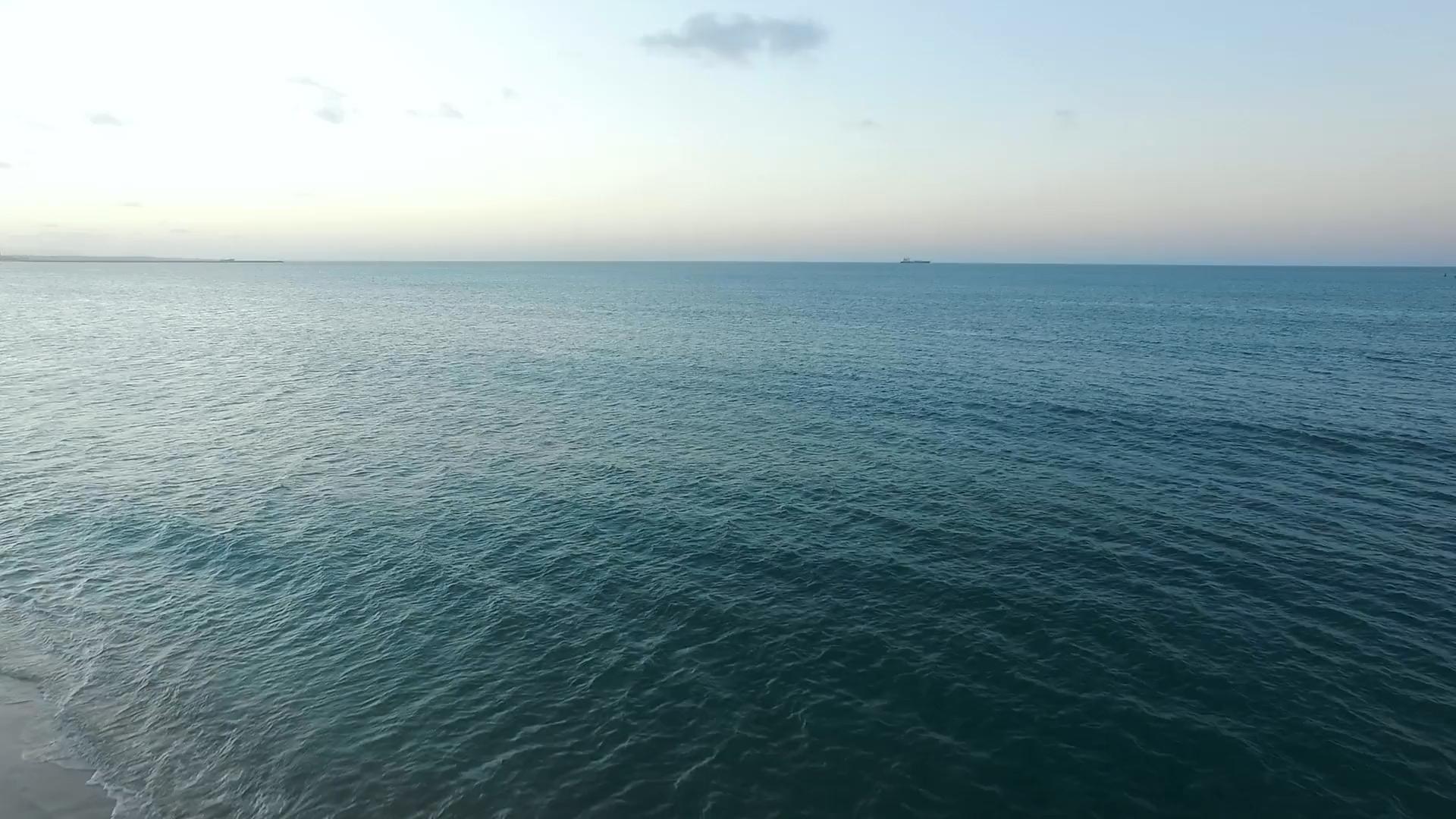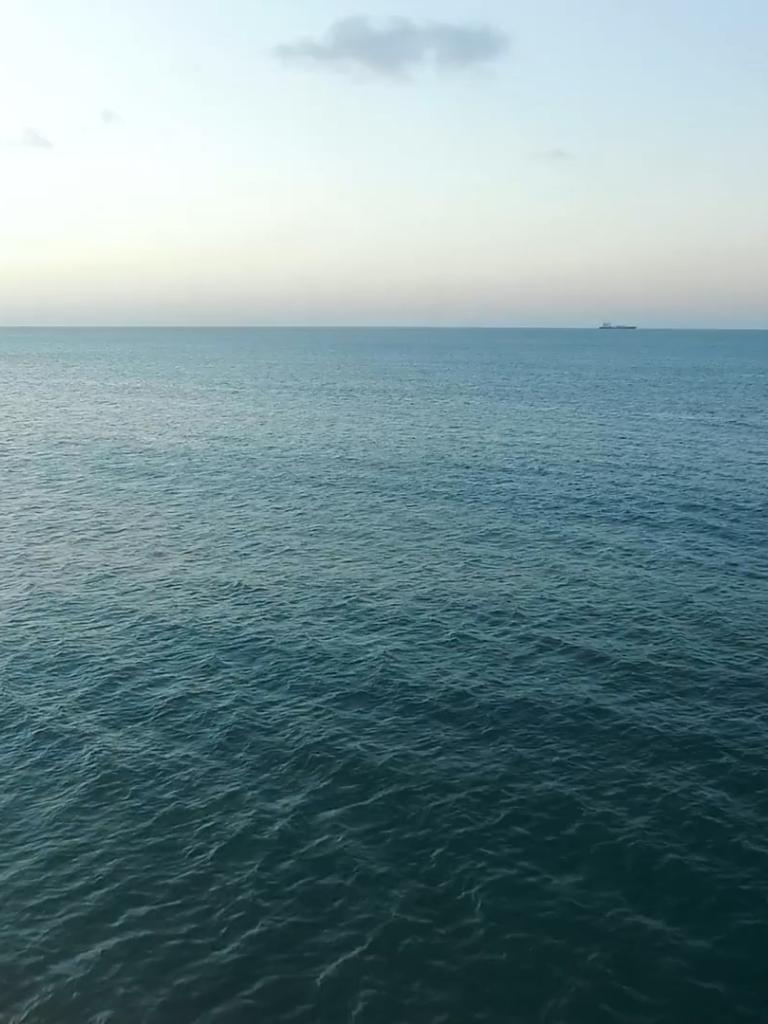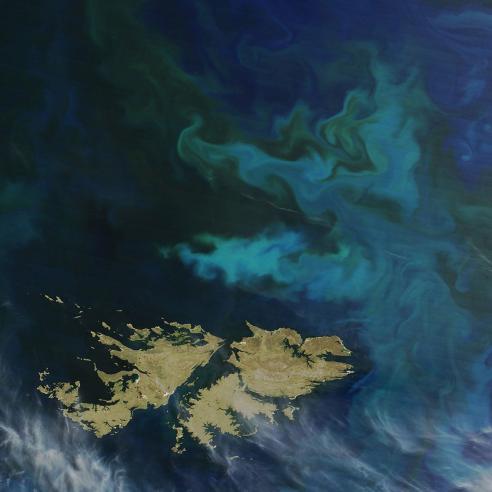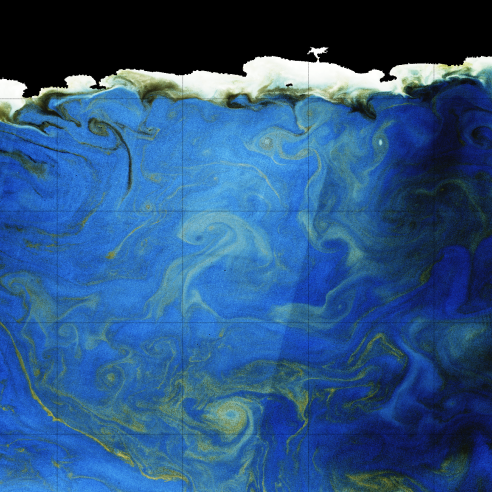EUMETSAT manages the operations of Ocean Colour products derived from the Ocean and Land Colour Imager (OLCI) instrument flown on the Sentinel-3 satellites from the European Commission Copernicus Programme. Ocean Colour System Vicarious Calibration (OC-SVC) with radiometric measurements at sea is required to achieve the quality of the Ocean Colour products defined in the mission requirements. OC-SVC requires a dedicated infrastructure at a favourable location. EUMETSAT has initiated activities on behalf of the EC to investigate the Copernicus OC-SVC infrastructure.
This study is part of a survey to find the best location for potential Copernicus OC-SVC infrastructure in European waters in terms of atmospheric, oceanographic and logistical site characteristics. The study follows Phase-1 and Phase-2 activities of the Copernicus OC-SVC roadmap and precedes the proposed Phase-4 activity. Phase-1 and Phase-2 were respectively the Scientific, Technical and Operational Requirements, and the Preliminary Design, Project Plan and Costing. The proposed Phase-4 is the Technical Definition, Specification, and Detailed Design study.
This study climatologically characterised the BOUSSOLE site (France) in terms of multiple atmospheric, oceanographic, logistical and other relevant parameters, in order to assess its suitability for the Copernicus OC-SVC infrastructure.
BOUSSOLE location: 43.366N, 7.9E.
Objectives
The objective of the study was to gather environmental data from available datasets and process them to provide a climatological characterisation of the BOUSSOLE site and its surroundings. In particular, geographic, atmospheric, oceanographic and anthropogenic conditions are assessed and analysed with respects to the requirements set in Phase-1 for the selection of an appropriate site to operate the field segment of an OC-SVC infrastructure. The study is completed by a description of logistics envisioned to support the development and operation of the future Copernicus OC-SVC infrastructure, in case the site would be selected.
Overview
The first part of the study was focused on:
- Identification of available datasets for the considered environmental variables
- Selection of the datasets
- Download/acquisition of the datasets
- Pre-processing and formatting of the dataset
The second part of the study was focused on:
- Calculation of climatologies
- Production of graphical supports and statistical indicators of the environmental variables
- Analyses of the environmental variables
- Writing of the report
The analysis showed that the BOUSSOLE site is an optimal compromise between logistical constraints and environmental characteristics within the study area and meets the criteria required for establishing an OC-SVC site. These criteria are summarised in the table below.
| Parameter | Required range | Analysis of how the site characteristics fulfil the requirements in AD-2 | Traceability |
|---|---|---|---|
| Fractional cloud cover | Low, per season/month/day, high persistence of cloud free conditions | The percentage of observations with cloud fraction < 0.1 is dominant in all season (between 33% and 50% during fall and summer respectively). The N° of days with CF>0.1 is 223 (and 180 for CF >0.3). The seasonal cycle of the CF is below 50% | 3.1 |
| Chlorophyll concentration | Stable and spatially uniform low concentration < 0.2 mg.m-3, daily/monthly/season | The [TChla] has a persistent seasonal cycle with low concentrations between May and February. Values below 0.2 mg m-3 were found for 46% of in situ measurements (55 % <0.25 mg m-3). The spatial pattern is homogeneous in the area between May and March. | 4.1 |
| Water bio-optical properties | Stable and spatially uniform Inherent Optical Properties (IOPs), uniform within buoy depth | The CDOM absorption at the BOSSOLE site has low seasonal variability and is homogeneous in the 20x20nmi area. The nRrs has a persistent seasonal cycle with variability of less than 1 order of magnitude at all bands, and spatially homogeneous seasonal patterns in the 20x20nm area. The coefficient of variation for |
4.3, 4.4, 4.2, 4.9 |
| Aerosol type and optical thickness | Stable and spatially uniform maritime aerosol, Aerosol Optical Thickness (AOT) < 0.15, only quantified and limited episodes of dust, biomass burning, pollution etc | AOT(550) at the BOUSSOLE site from satellite observations has an average value of 0.2, a stable seasonal cycle and is homogeneous around the site. The AOT(870) from in situ and satellite measurements is below 0.15 all year long, thus respecting the conditions generally used for SVC of AOT < 0.15 in the NIR. Saharan dust episodes are of the order of 20-30 per year according to different methodologies. Biomass burning/Urban Industrial episodes are 32 per year. | 3.3, 3.4, 3.5 |
| Atmospheric gases | Quantified and limited absorbing gases: ozone, stratospheric & tropospheric NO2 from cities & ship emissions), H2O | Total column O3 and total precipitable water at the BOUSSOLE site are characterised by a persistent seasonal cycle with moderate interannual variability. The total column NO2 has low seasonal variability with higher interannual variability in the cold season and low interannual variability in the warm season. | 3.7, 3.8, 3.9 |
| Currents, significant wave height | Low to minimise buoy tilt, low frequency of swells, low hydrosol advection | The BOUSSOLE site is characterised by low current (mean of 0.37ms-1 estimated from buoy tilt). The BOUSSOLE site is at 60km from the coast, the main current flows at 20-30km from the coast at its maximum in winter (0.2-0.5ms-1) and is lower the rest of the year. Average and median Hs are 1.1 and 0.88 m. 63 % of Hs records are below 1m. | 4.5, 4.6 |
| Bathymetry | Depth > 800m | Measured depth at the site is 2440m. with a slope of about 4%. The whole area has depths > 800m. | 2.2 |
| Wind speed and direction spectrum | Low surface wind, per season/month/day | Wind speed at the BOUSSOLE site are below 10m s-1 for 83% of the time. This probability increases in spring summer and fall | 3.2 |
| Distance from land | Should be maximised within the site logistic constraints | The BOUSSOLE site is located at 60km from the coast, outside the main flow of the Ligurian current and typical cruising and typical navigation time from Nice is 3h10 with an R/V and 1h45 with on demand ships. | 2.1 |
| Solar illumination conditions | Maximising light availability per season/month/day | The cosine of the solar zenith angle at 10 LST varies between 0.30 and 0.85 at the BOUSSOLE site offering favourable illumination conditions. Latitudinal variation over the 20x20nmi area are <0.8% from conditions at the site. | 2.3 |
| Sea surface temperature, salinity | Stable and spatially uniform | The site is characterised by a persistent seasonal cycle with moderate interannual variation and homogeneous spatial distribution for both SST and SSS. | 4.7, 4.8 |
| Maritime traffic | Minimal | Vessel density at the BOUSSOLE site is of the order of 0.0005 hours kg-1 month-1. The site is located in a region of minimal maritime traffic within the 20x20nmi area. | 5.1 |
| Close fires | Minimal | The site is located at 60km from the coast, the whole area resides at sea with no risk of direct fire. Eventual plumes of biomass burning/urban industrial emissions (not discernible from the methodology used here) are of the order of 32 per year at the site and in the minimum zone of occurrence in the 20x20 area. |
5.3 |
| Logistics | Nearby atmospheric observatory. Nearby port able to support mooring and field maintenance operations. Nearby facility able to support storage, maintenance and calibration operations. High volume data communication links | An atmospheric observatory, equipped with an AERONET robotic station and a station for monitoring mass fluxes of biogenic elements and trace metals aerosol parameters of dry and wet deposition, is located on the coast at about 60km from the site. The Villefranche-sur-Mer port hosting routine buoy operations and on demand interventions is located at few meters from IMEV. The Nice port hosting RVs for monthly cruises is at 6km from the IMEV. The La-Seyne-Sur-Mer port, hosting the ship used for triennial mooring rotations, and Mediterranean headquarters of the French Oceanographic Fleet is located at 163km from IMEV. A warehouse of about 500m2 is rented by IMEV to the Alpes-Maritimes Department, which is responsible of the Villefranche-sur-Mer Port domain. It is located adjacently to IMEV and hosts the preparation of the BOUSSOLE buoy and storage of mooring elements. Other spaces in the IMEV buildings are available for storage and activities for maintenance cruises. Two rooms dedicated to radiometric calibration exist at IMEV, along with laboratories for optical and biogeochemical analyses. Argos, Iridium, and GSM communications is available at the site. For a correct high-volume data transfer with GSM, a directional antenna on land is required at a minimum of 270m above sea level (tests were carried out successfully at a potential site for hosting the antenna at 13km from IMEV). |
6 |
Study reports
Climatological and Observational Datasets for BOUSSOLE, Task 1 Report (Deliverable 3), Laboratoire d'Océanographie de Villefranche (LOV), Institut de la Mer de Villefranche (IMEV)
Climatological Characterisation of BOUSSOLE, Task 2 Report (Deliverable 4), LOV/IMEV
Presentations
Progress meetings
Final project review (5 May 2021)
Expert Review Meeting (24 June 2021)
| Phase | Details |
|---|---|
| Kick-Off | 03/02/2021 |
| Duration | Three months |
| Status | Completed |
| Work Package 1 | Project management |
| Work Package 2 | Climatological and Observational dataset |
| Work Package 3 | Site characterisation |
| Phase | Details |
|---|---|
| Kick-Off | 03/02/2021, Online |
| Progress Meeting 1 | 19/03/2021, Online |
| Progress Meeting 2 | 07/04/2021, Online |
| Final meeting | 05/05/2021, Online |
| Expert review | 24/06/2021, Online |
Conference
Second international Operational Satellite Oceanography (OSO) Symposium, 25-27 May 2021, Virtual Conference. Recent Advances for ROSACE: A European Design for the Copernicus Ocean Colour System Vicarious Calibration Infrastructure









